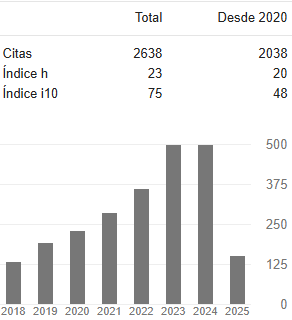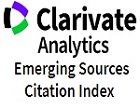Concern detection along the requirement development
DOI:
https://doi.org/10.31908/19098367.3711Palabras clave:
business process model, user requirement model, software requirement model, aspect-oriented software development, crosscutting concerns, AOP4STResumen
There are a lot of aspect-oriented approaches presenting solutions for the diff erent phases of the Software Development Life Cycle (SDLC). However, there is no approach with a coherent process and employing standard representations and tools along the whole SDLC. We have elaborated an alternative called Aspect-Oriented Process for a Smooth Transition (AOP4ST), that allows the smooth incorporation of the aspect-oriented paradigm in the current industrial projects and off ers a complete homogenous proposal for the phases of the SDLC. In this paper, we present how to fi nd concerns at the fi rst stages of AOP4ST, when we move from the business model to the software requirements model, performing the requirement development activity of requirement engineering.
Descargas
Referencias
Kiczales G. et al., “Aspect-Oriented Programming”. ACM Comput. Surv., vol. 28, no. June, pp. 220–242, 1997.
Magableh, A., Shukur, Z. and Ali, N. M. “Systematic review on aspect-oriented UML modeling: A complete aspectual UML modeling framework,” J. Appl. Sci., vol. 13, no. 1, pp. 1–13, 2013.
Bakker, J., Tekinerdogan, B. and Aksit, M. “Characterization of Early Aspect Approaches,” Early Asp. Asp. Requir. Eng. Archit. Des. Work., p. 7, 2005.
Rashid, A., Moreira, A. and Tekinerdogan, B. “Early aspects: aspect-oriented requirements engineering and architecture design,” Software, IEE Proc., vol. 151, no. 4, pp. 153–155, 2004.
Jalali, A. “Assessing Aspect Oriented Approaches in Business Process Management,” in Perspectives in Business Informatics Research, 13th International Conference, BIR 2014, pp. 231–245, 2014.
Capretz, L. F. “A brief history of the object-oriented approach,” SIGSOFT Softw. Eng. Notes, vol. 28, no. 2, p. 6, 2003.
“History of Programming Languages,” in History of Programming Lang. Conf.
Leavitt, N. “Whatever Happened to Object-Oriented Databases?” Computer (Long. Beach. Calif)., vol. 33, no. 8, pp. 16–19, 2000.
Greefhorst, D. and Proper, E. Architecture Principles. The Cornerstones of Enterprise Architecture, vol. 6, no. 3, 2011.
ABPMP, BPM CBOK V.3.0 - Business Process Management BPM Common Body of Knowledge, 2013.
Pinciroli, F. “Considerações acerca da mineração de aspectos,” Perspect. em Ciências Tecnológicas, vol. 5, no. 5, pp. 83–101, 2016.
Charfi, A., Müller, H. and Mezini, M. “Aspect-oriented business process modeling with AO4BPMN,” Lect. Notes Comput. Sci. (including Subser. Lect. Notes Artif. Intell. Lect. Notes Bioinformatics), vol. 6138 LNCS, pp. 48–61, 2010.
Pinciroli, F. “Improving software applications quality by considering the contribution relationship among quality attributes”. Procedia Comput. Sci. 3rd Int. Work. Comput. Antifragility Antifragile Eng. (ANTIFRAGILE 2016), vol. 83, pp. 970–975, 2016.
Clarke, S. and Baniassad, E. Aspect-oriented analysis and design. The Theme Approach. Boston: Addison-Wesley, 2005.
I. Jacobson and P. Ng, Aspect-oriented software development with use cases. Addison-Wesley, 2005.
Pinciroli, F. “Aspect-Oriented Process for a Smooth Transition,” in Ph.D. Symposium of the IEEE 11 Congreso Colombiano de Computacion, 2016.
Pinciroli, F. and Barros Justo, J.L. Early aspects in “Aspect-Oriented Process for a Smooth Transition”. Accepted article at CACIC 2017, not yet published (http://cacic2017.info.unlp.edu.ar/).
Pinciroli, F. “AOP4ST – Aspect-Oriented Process for a Smooth Transition,” in WICC 2015 - XVII Workshop de Investigadores en Ciencias de la Computación, 2015.
Pinciroli, F. and Zeligueta, L. “El modelo de negocio en AOP4ST,” in WICC 2016 - XVIII Workshop de Investigadores en Ciencias de la Computación, 2016.
Pinciroli, F. and Zeligueta, L. “Modelado de negocios orientado a aspectos con AOP4ST,” in WICC 2017 - XIX Workshop de Investigadores en Ciencias de la Computación, 2017.
Descargas
Publicado
Número
Sección
Licencia
Derechos de autor 2025 Entre Ciencia e Ingeniería

Esta obra está bajo una licencia internacional Creative Commons Atribución-NoComercial 4.0.



















